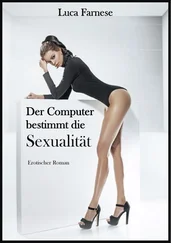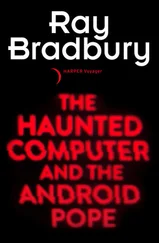In retrospect, that rift between two factions of an obscure group of highly technical young amateurs appears to have been the birth pang of an infant industry. But very few people, other than maybe Paul Allen and Bill Gates, were thinking of industries or fantasizing about software empires back in 1976 and 1977. Most were content at the time to keep their hobby—and whatever differences of opinion they might have about that hobby—to themselves. Their arguments were still in the family, for they were all part of a single community. But in a very short time, these amateurs would find that they were no longer obscure.
From VisiCalc to Activision: The Beginning of the Software Industry
The year 1977 marked the beginning of an entirely new era in the computer revolution. In the spring of 1977, both the Apple II and the Commodore PET were born in the same place—the first West Coast Computer Faire. The Faire was an unexpectedly popular, totally enthusiastic convergence and celebration by thousands of disciples of the new doctrine of the personal computer. The man responsible for convening the Faire was one of the most mischievous and skillful social organizers of the personal computer culture, a somewhat older, definitely more radical associate of the homebrewers—Jim Warren.
Warren already had a reputation as a flamboyant social organizer by the time he got hooked on computing and decided that everybody else ought to get in on the thrill. Before that he had been chairman of the mathematics department at a Catholic women’s college on the fringe of Silicon Valley. After five years, he was fired in the midst of a scandal. It seems that the college administration was not amused by the reports from Time, the BBC, and Playboy that had documented the wild parties that he was having at his home. In Warren’s words, these parties “. . . were rather sedate by any common standards, except people didn’t have to have clothes on.”
Following his dismissal from the college, he looked around for new employment and happened upon a job at Stanford University that required programming skills. He was not particularly qualified for the position. But he learned quickly while on the job, and like many others, he found that he had a talent and an enthusiasm for the art and science of programming. He was soon involved in a crusade to “bring computing to the people.” He edited an enthusiasts’ magazine, one with a social conscience and sense of humor as well as pages of technical jargon. Its title, Dr. Dobb's Journal of Computer Calisthenics and Orthodontia, was a programmers’ joke based on the magazine’s subtitle, Running Light without Overbyte, which referred to the limited memory capacity of early microcomputers.
By 1976, computer hobbyists were beginning to attend national shows in New Jersey, Denver, and Detroit. Warren, who had attended several of these shows, thought that the organizers had not done justice to the spirit of the movement and that the shows lacked what he felt was an essential element: a party-like atmosphere. One thing they know about out in California is how to throw a party, and with Warren’s own slightly scandalous credentials as a socializer, he became determined to throw his own bash for computer enthusiasts. He saw his show as a potentially joyous event, a celebration of the liberating advent of personal computing. He envisioned organizing something like the Renaissance Faires that at the time were immensely popular in the San Francisco Bay Area. He then formed a company, signed up exhibitors at $300 apiece, and, renting the San Francisco Civic Auditorium for the event, convened the first West Coast Computer Faire in April 1977.
The event was a milestone, remembered with reverence and glee by those who participated—a Woodstock for the personal computer generation. People who would be running multimillion-dollar operations a few years later were manning their booths and talking about their products. The Apple II made its debut. Companies were born. Introductions were made. Visionaries traded crazy predictions about how there would soon be millions instead of thousands of people in this personal computer community.
In the aftermath of the Faire, and by one of those twists of fate that are called “history” long after they happen, Microsoft grew overwhelmingly in its importance while MITS disappeared. Roberts’s company, whose Altair had been worth $13 million in gross sales in 1976, was sold in May 1977 to a company called Pertec for what Roberts said was “essentially 6 million dollars.” Gates and Allen decided that their BASIC interpreter would not be part of the acquisition—thus signaling the end of their relationship with Ed Roberts. Pertec management brought in some three-piece-suit types who immediately alienated the fanatically devoted MITS employees. The Altair was facing stiff competition in the market at just the time MITS’ original crew was departing.
By late 1977, the first wave of home computers like the Altair, the Sol, and the IMSAI were sharing the marketplace with Commodore’s PET and a model put together by a couple of homebrewers, both named Steve, who decided to give their elegantly garage-engineered product the unlikely name of Apple. The hardware hobbyists were building an industry right in the backyard of the mainframe giants. And the software entrepreneurs were coming up with programs for those new, small, affordable computers—programs that would quickly change the way offices operated, businesses were run, and teenagers entertained themselves.
Microsoft in particular continued to turn out different versions of BASIC as the different brands of personal computer grew in number, diversity, and power. Allen and Gates eventually moved to Bellevue, an affluent, woodsy suburb of Seattle, to expand a company that would in time become a major force in the software business.
From 1975 through 1977, personal computers were mostly for hobbyists who were willing to learn how to program in BASIC or even get down to circuit boards and soldering irons to put their equipment together. Homebrew computers were exciting only to that tiny minority who loved to work with their hands as well as their heads. The far vaster audience of people, however, didn’t care how computers were put together. They became owners primarily because they were drawn to what computers could do for them. And by the late 1970s, personal computers could do more than ever before, thanks mainly to the development of video displays and the development of better software. It was, in other words, the creation of spreadsheets, word processors, and adventure games— programs —in conjunction with improved hardware technology that turned computers into consumer items.
In the late 1970s, prior to my own entry into the software industry, three different programs virtually created the mass market for personal computers. First, there was VisiCalc , which convinced businesspeople and everyone who worked with numbers that the potential pragmatic gains of being able to experiment with financial projections and to prepare business presentations made buying an Apple a worthwhile investment. Then WordStar showed typists, writers, and anyone who worked with words that a small computer could enable them to accomplish tasks that were either tedious or impossible to do with an old-fashioned typewriter. Finally, Adventure Land and other “fantasy simulation” games showed people of all ages that the small computer could be used as a fantastic toy and a means of amplifying the power of imagination. These games also advanced the notion that computers could be used in the home.
In many ways, VisiCalc created the Apple empire and gave it both a toehold in the small-business market for computers and a fanatic following in the hobbyist world. This program, the first electronic spreadsheet for microcomputers, was written in 1978 and 1979 by Bob Frankston and Dan Bricklin, who years before had been roommates at MIT. It originated when Bricklin, as a graduate student at Harvard Business School, was given a particularly onerous homework assignment—to prepare spreadsheet analyses of various hypothetical companies. The professor gave the students a mass of financial data and lists of assumptions, and the students had to make intricately cross-referenced calculations in order to project those companies’ fortunes at specified times in the future.
Читать дальше










